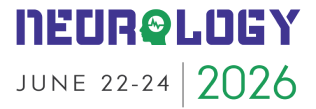Title : Agranovich O. Influence of spinal cord injury in outcomes of treatment in the upper extremity in children with amyoplasia.
Abstract:
Intriduction. Patients with arthrogryposis multiple congenital (AMC) have upper limbs deformities in up to 95% of cases. They usually have a typical appearance: the shoulder is held in adduction and internal rotation, the elbow in extension (less often in flexion), the wrist is held in flexion, the thumb is adducted, and the finger joints are held in varying degrees of flexion. Most patients have deformities of both upper extremities (84%), and contractures are usually symmetrical. Gibson and Urs (1970) examined 140 patients with AMC and found that in their series 72% had lesions of the upper extremities, of whom 32% had deformities of the wrists, 26% of the hands, 25% of the elbows, and 19% of the shoulders.
In the available literature, we found several classifications of upper limb
deformities in patients with AMC (Weeks,1965; Smith, 1973; Brown et al., 1980; Mennen, 2005).
Materials. From 2004 to 2015, 268 patients with upper limb deformities due to AMC were examined and treated in the H. Turner National Medical Research Center for Children’s Orthopedics and Trauma Surgery in St. Petersburg, Russia.
Results. We modified Brown’s et al. classification of upper limbs deformities in patients with AMC and identified 2 main forms: isolated and complex.
A. Isolated forms were divided into several sub types according to the
level of myotome injury: Type 1 - C6-C7, Type 2 - partial C5, C6-C7, Type 3 - C5-Th1, Type 4 - С6.
All types differ from each other by range of passive and active motion in all joints of the upper limb and have different clinical appearances.
B. Complex forms presented with AMC in combination with other pathologies: obstetric palsy, intra-natal cervical injury, cerebral disorders and congenital upper limbs anomalies.
Conclusion.
Our classification of upper limbs deformities in patients with AMC helps to choose the optimal mode of treatment and can predict the results of treatment.




